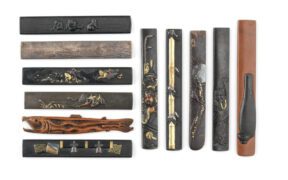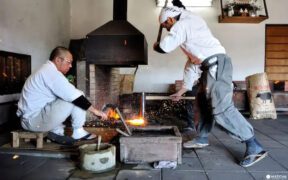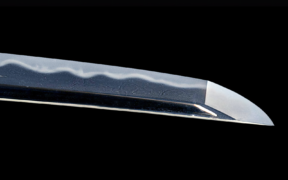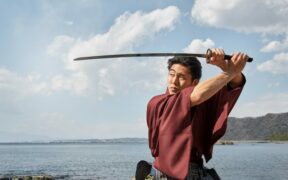Our content features commercial links to our products, committed to transparent, unbiased, and informed editorial recommendations. Learn More
Kogai Explained: The Japanese Hairdressing Tool
NO AI USED This Article has been written and edited by our team with no help of the AI
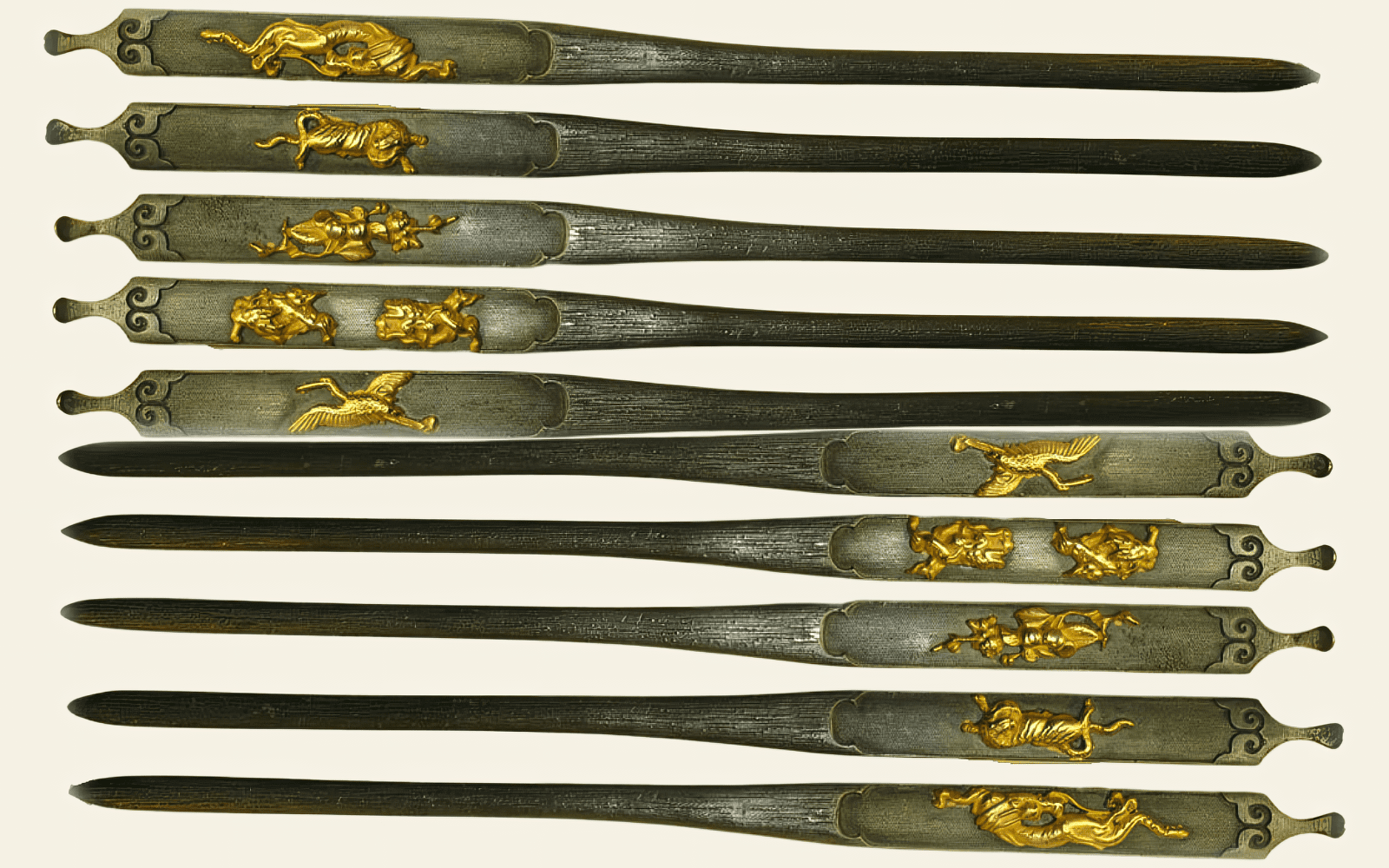
The kogai is an implement used for arranging the samurai’s hair. It was often carried in the scabbard of a Japanese sword or dagger, making it a part of sword mountings. Many were of fine craftsmanship and exquisitely made using sophisticated metalworking techniques. Apart from its practical and ornamental uses, it also reflected the status and wealth of its wearer.
Let’s explore the unique design of a kogai, its historical uses, and its significance in Japanese culture.
Characteristics of a Kogai
Kogai (笄) literally means sword-needle, a reference to its long, slender shape. It was usually designed to match the kozuka (handle of a utility knife), both carried in the pockets of the scabbard.
Here are the unique characteristics of a kogai:
Material and Construction
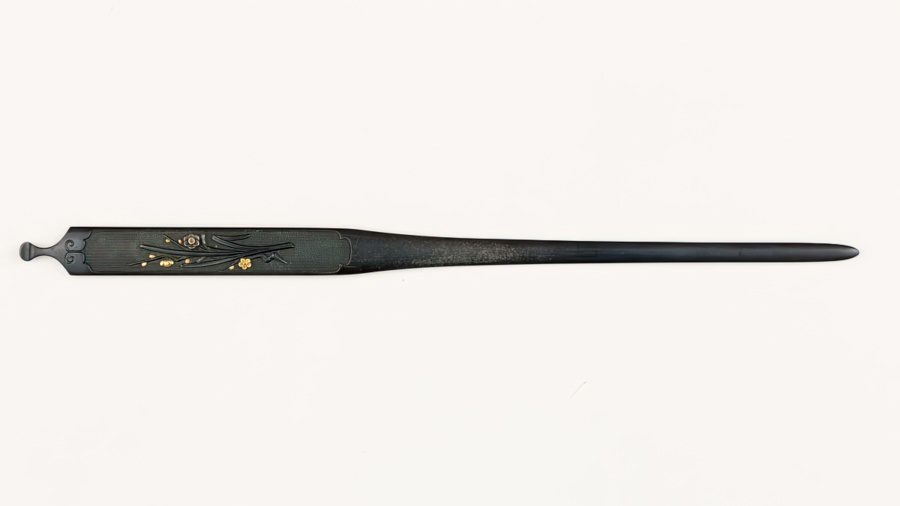
Early kogai were made of raw, unrefined copper called yamagane (meaning mountain copper), which appears subtle and plain. Technically, the yamagane contains a small amount of shirome (arsenic-containing antimony). It varied strongly in color depending on the mining area and is harder and darker than pure, refined copper.
However, many Edo-period kogai were made of shakudo, an alloy of gold and copper, patinated to a dark blue-black color by chemical means. Many Japanese artisans also changed the combinations of metals, such as gold, silver, and copper, and used alloys of various colors to make colorful sword fittings.
Parts and Function
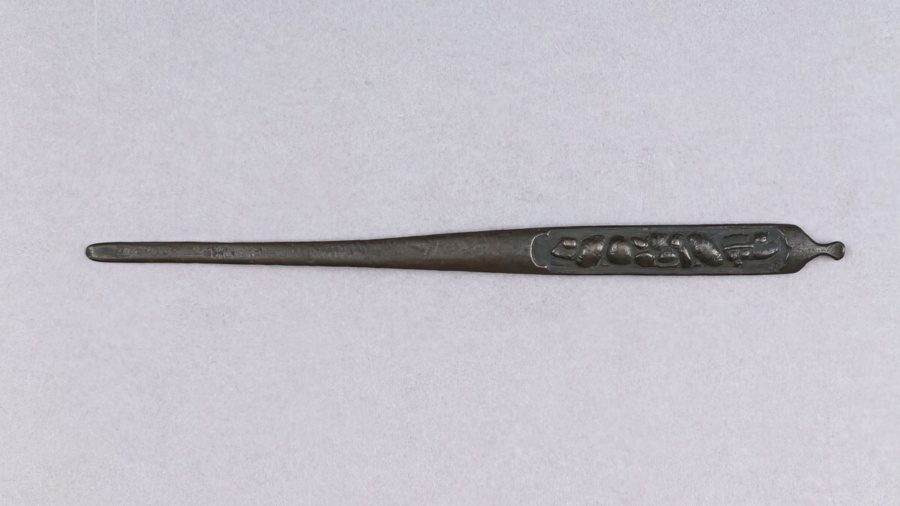
It is believed that the kogai served as a hairpin or hairdressing tool used by men to groom their hair and topknot. When the samurai wore armor, they used it to arrange their hair before putting on or after removing the helmet. It continued to be used even when armor was seldom worn, usually to push loose hair back under the eboshi headgear.
Here are the essential parts of a kogai:
- Mimikaki (耳掻) – The spoon-shaped end on the top of the grip. The term mimikaki literally means ear scratcher, and it was probably used to clean the ears.
- Kata – The shoulder of a kogai.
- Do (胴) – The grip section of a kogai.
- Ji-Ita – A separate decorative plate set in the grip of a kogai. More often, it was the only part crafted by masters, and the rest was done by apprentices. Sometimes, the ji-ita was taken from a kogai and set in a kozuka (utility knife handle).
- Sao (竿 or 棹) – The needle part of the kogai.
- Hosaki – The blunted tip or point of a kogai. Old records suggest that the tip of a kogai was used to reach through openings in the armor to scratch itches or scratch the scalp underneath the headgear during hotter days.
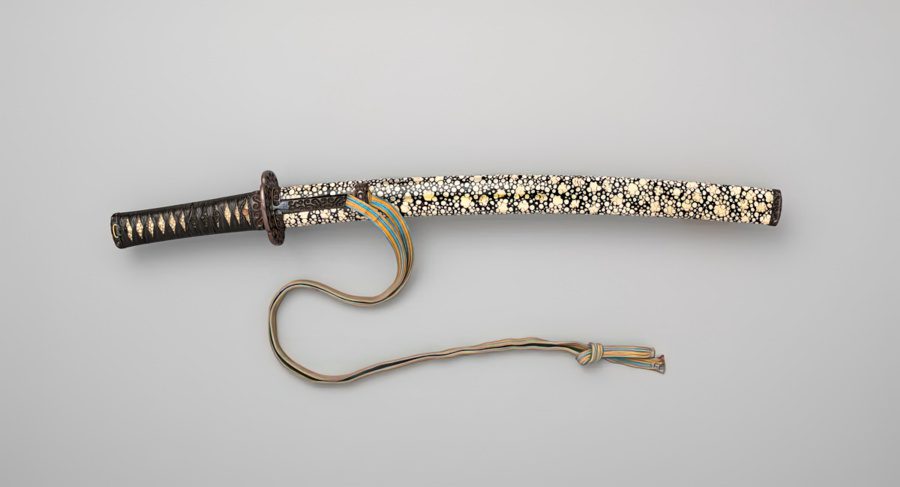
The saya (scabbard) of some Japanese swords and daggers feature small pockets (hitsu) on the upper part for the kogai and kozuka (handle of a small utility knife). A kogai fits into a slot on one side of a scabbard, and a kozuka would be found on the opposite side.
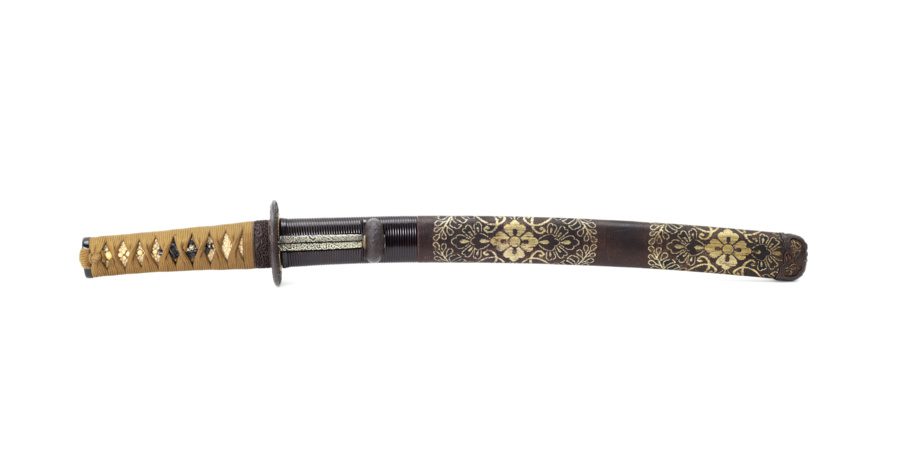
The tsuba (sword guard) features small side openings, letting through these fittings without drawing the sword. The opening on a tsuba for the kogai is called kogai-hitsu-ana (笄櫃孔), which is always on the right side. The handle of the kogai protrudes through the sword guard.
Wari-Kōgai
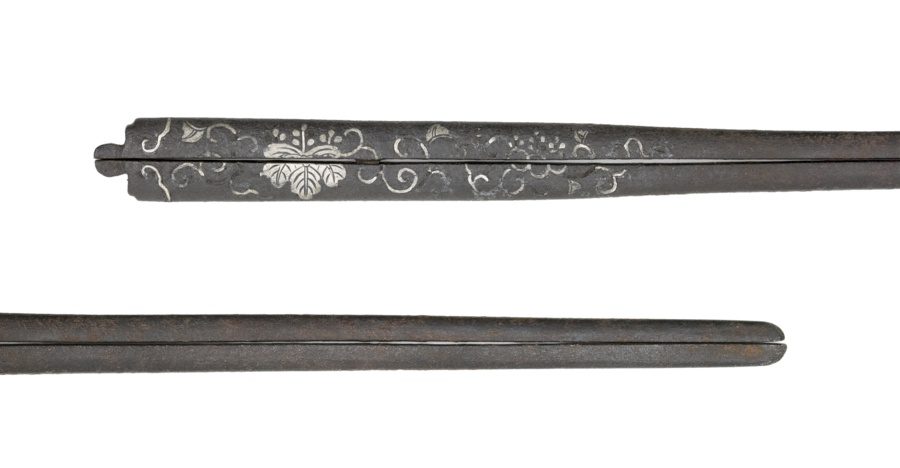
A type of the kogai is the wari-kogai (割笄), which separates into two, forming a pair of chopsticks. It usually features a mortise-and-tenon joint to hold the halves together when placed in the scabbard. The wari-kōgai was popular from the Edo period onwards.
Some speculate that the wari-kogai and the utility knife kogatana were likely used as portable chopsticks during a campaign. However, some experts suggest that it was not used as chopsticks for eating but as ceremonial tweezers for handling incense.
Craftsmanship and Design
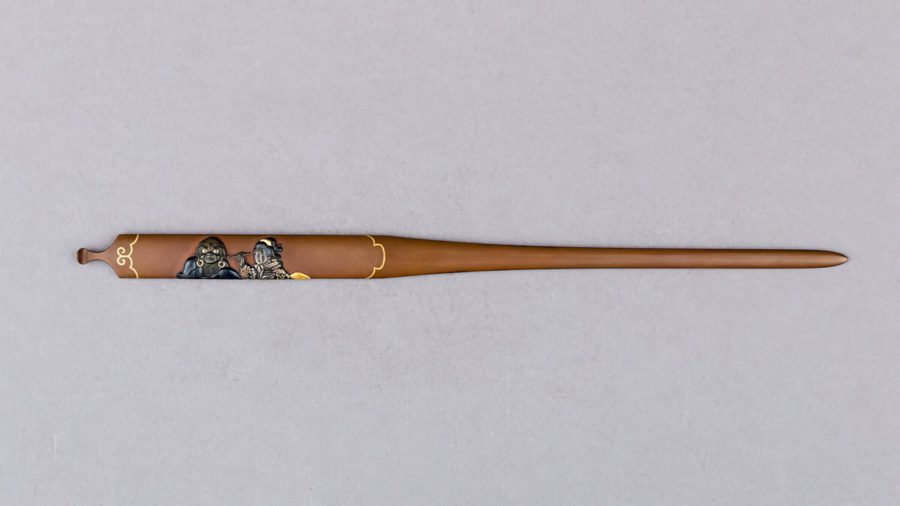
Japanese metalwork often utilizes materials like gold, silver, and copper. Many of its metalwork techniques known today are derived from techniques used for making ornamental sword fittings. Several metalworking techniques used on a kogai were also utilized in tsuba (sword guard) and other fittings like kozuka and fuchigashira.
Carved or Engraved Designs
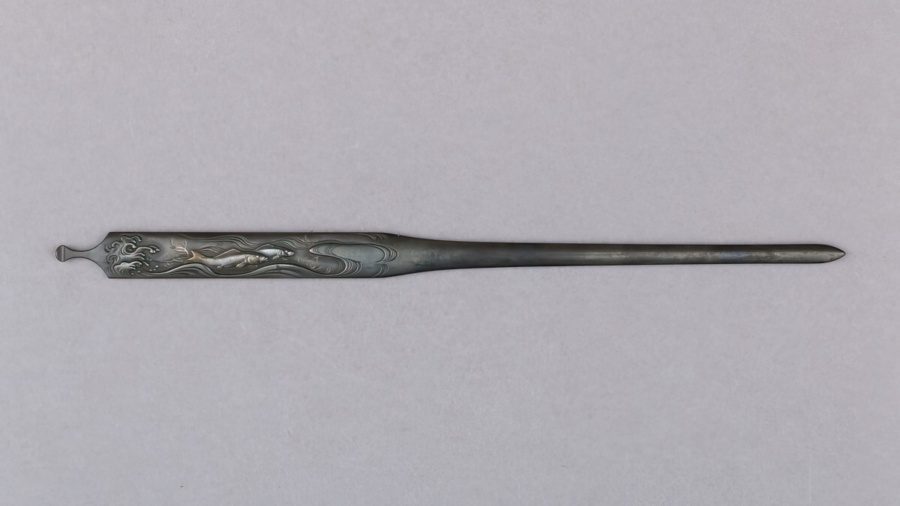
There were different carving techniques used for a kogai. The sukidashi-bori (容彫)—meaning dug away carvings—involves cutting away the background to create low relief. The fukabori (深彫), meaning deep carving, is a type of sukidashi-bori where the bottom of the relief is deeply carved into the ground plate, but the motif itself is leveled with the surface.
Inlaid Designs
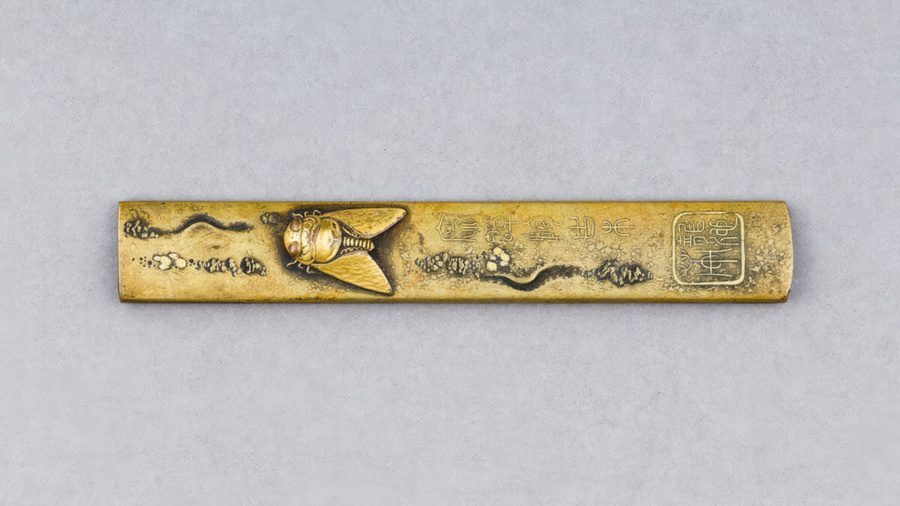
In some cases, a separately made motif is set into a kogai, in which the ground plate is prepared in advance to hold the piece to be set in. This technique is called suemon-zogan (据紋象嵌), meaning to lay-in or set-in a pattern. Most of the time, the motif is higher than the ground plate. The technique is also used in other sword fittings like tsuba, kozuka, fuchi, and kashira.
Gold Patterns or Designs
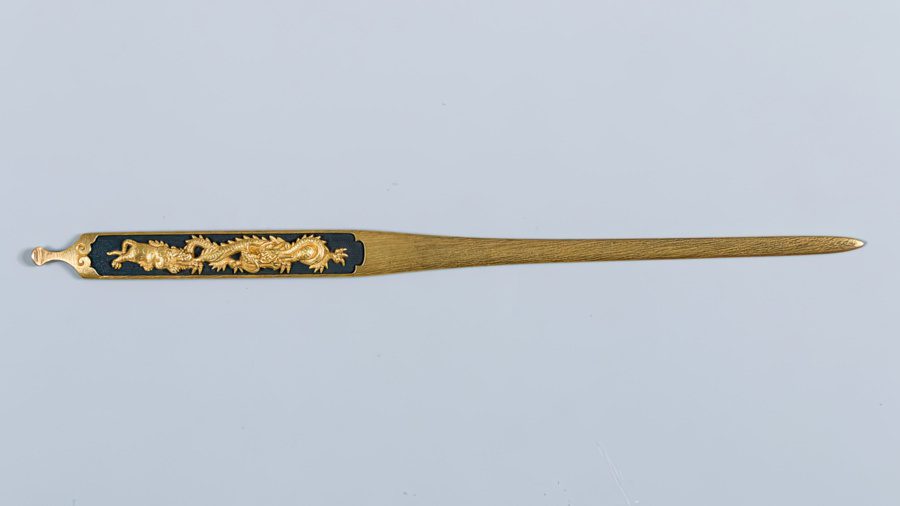
Some motifs of a kogai are carved in katachibori style (meaning form or shape carving) from pure gold and are set on the surface via the suemon-zogan technique. It is called kinmon, meaning gold pattern, design, or motif.
Originally, the term kinmon was used to describe official family crests or heraldic insignia (mon), which were applied with gold lacquer, and often found on the transport chests of Edo-period daimyos. The kinmon motif was usually restricted to a kogai and kozuka.
Iroe Colored Designs
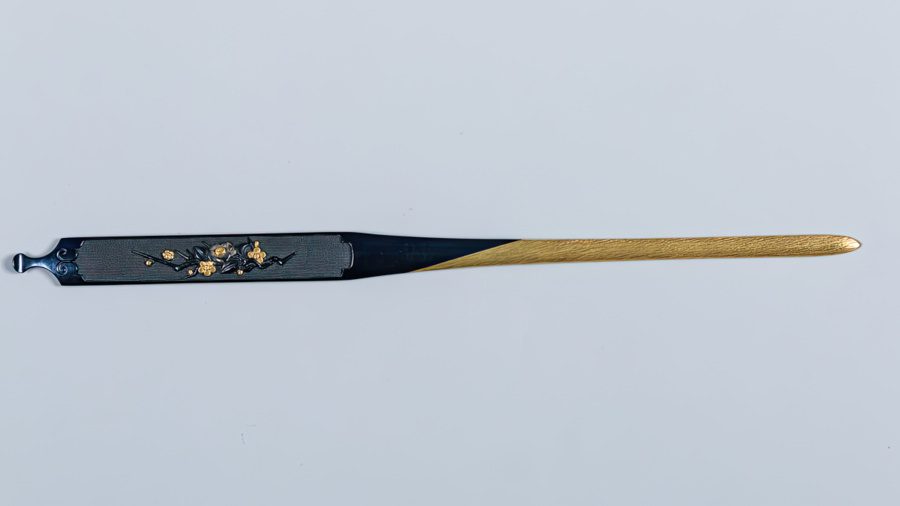
The term iroe (色絵) literally means color(ed) picture and refers to any coloring of a motif regardless of the technique used. It can be applied by using heat, solder, or mechanical means. Some kogai were covered with gold foil, with a few features contrasting gold and shakudo. The technique is widely seen on old copper bowls and brass vases.
Historical Facts About the Kogai
The craftsmanship of kogai and other sword fittings peaked during the Edo period, from 1603 to 1868, when the samurai class always wore swords. During that time, there was a high demand for sword fittings, and the craftsmanship became more elaborate.
A matched pair of a kogai and kozuka is referred to as futatokoromono.
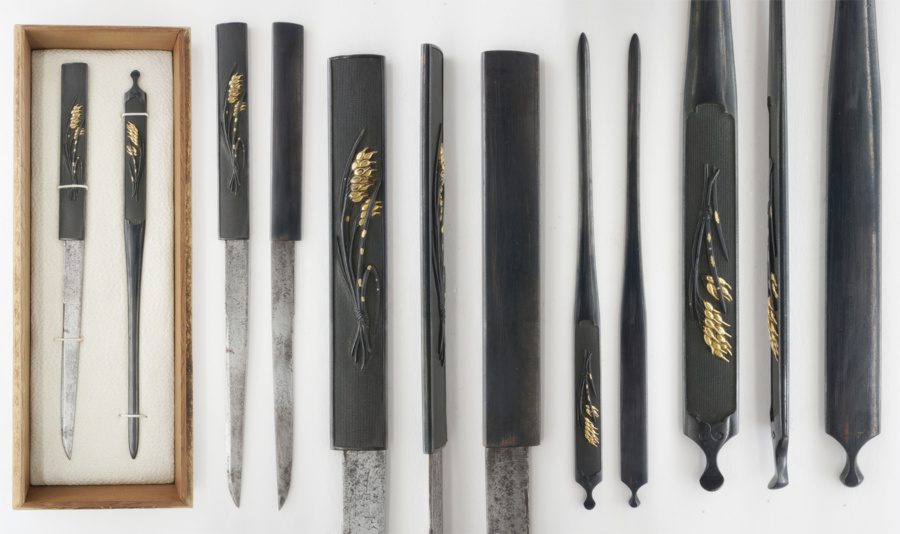
The kogai and kozuka were often incorporated into the fittings of a Japanese sword and are collectively called futatokoromono (ニ所物). A kozuka, meaning small hilt, refers to the handle of a small knife kogatana, though sometimes the term is applied to the whole knife. Both were kept in slots on the scabbard, often made in matching designs. Also, some kogai have been reworked into kozuka and are called kogai-naoshi.
A matching set of kogai, kozuka, and menuki is called mitokoromono.
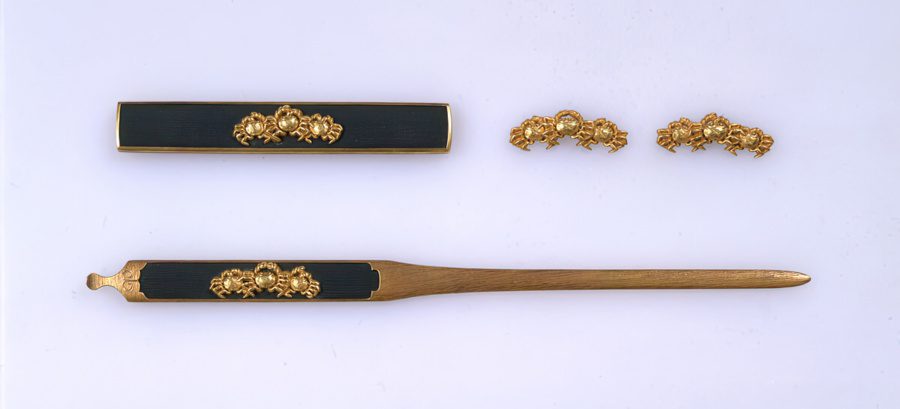
The term mitokoromono (三所物) literally means things of three places. The mitokoromono set consists of three ornamental sword fittings: kogai, kozuka (hilt of a small utility knife), and a pair of menuki (grip ornaments). The menuki ornaments are placed under the hilt wrapping on either side of the grip.
The Goto family made kogai and other sword fittings for influential samurai.
During the Edo period, the Goto family of carvers, founded by Goto Yujo (1440–1512), manufactured sword fittings for the shoguns, daimyos (feudal lords), and powerful samurai families. These sword fittings were made of copper-alloy shakudo and decorated with gold. Such sets were highly valued and often given by the shogun to nobles. By the mid-Edo period, other metalworking schools changed the combinations of metals and used various alloys for sword fittings.
A set of four sword fittings is called yotokoromono.
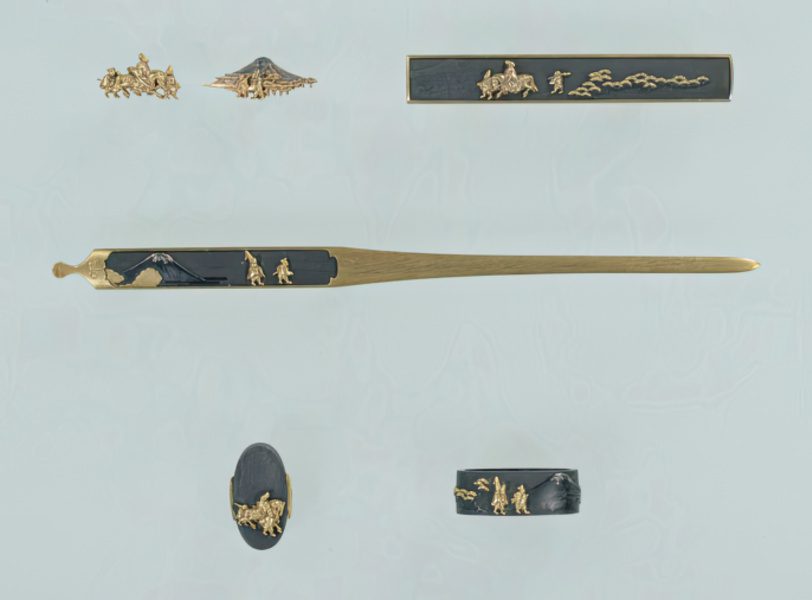
A yotokoromono consists of a mitokoromono, a fuchi (metal collar), and a kashira (pommel cap)–collectively called fuchigashira. The Goto family, specializing in mitokoromono, also made a few fuchigashira sets. On the other hand, the set of seven is called nanatokoromono—comprising a kogai, kozuka, menuki, fuchigashira, kurigata, kojiri, and kaerizuno.
A kogai often accompanied wakizashi and tanto scabbards.

A koshigatana in aikuchi-style mounting has no sword guard and is thought to have originally contained a kogai in the slot of the scabbard. Eventually, the kogai was incorporated in the short sword wakizashi and tanto dagger scabbards, and rarely on long sword katana. A tanto with a hamidashi-style mounting has a small guard, which does not have room for openings for the kogai and kozuka and instead features open notches.
The kogai reflected the status and wealth of its wearer.
During the Edo period, a formal daisho koshirae—a set of wakizashi and katana in matching mountings—must be fitted with mitokoromono in matching material, craftsmanship, and design. Like other mountings, the kogai was of fine craftsmanship and made of luxurious materials, revealing much about its owner’s status, wealth, and taste.
Some kogai designs reflect foreign influence.
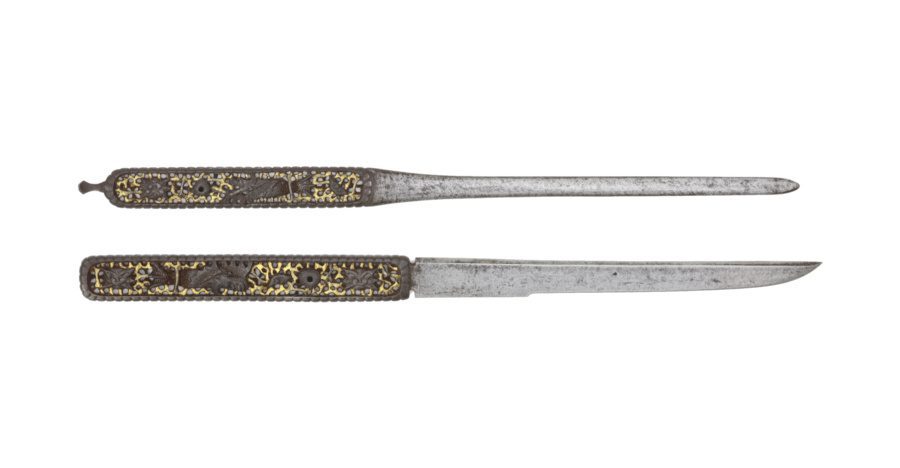
Japanese sword mountings, including kogai, that show a hint of foreign influence are widely called Nanban, meaning Southern barbarian style. Some styles were of Kanton style—inspired by Chinese sword guards from Beijing royal workshops—which were traded through the port of Kanton to Japan. Eventually, Japanese artisans copied the Chinese design into their works.
